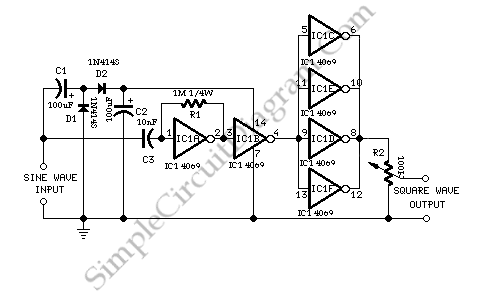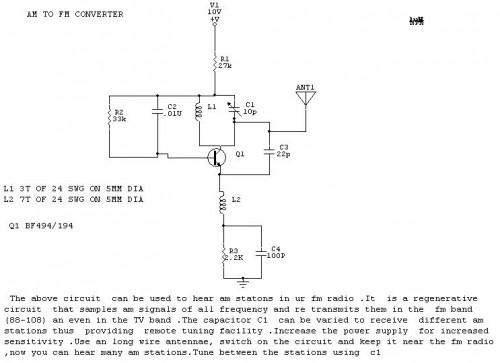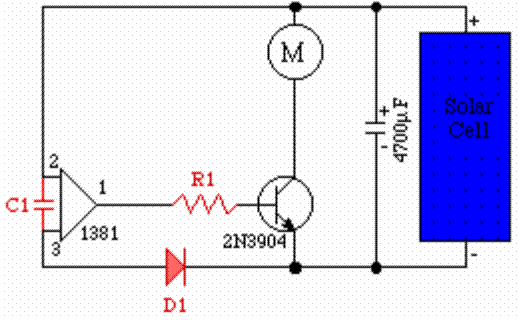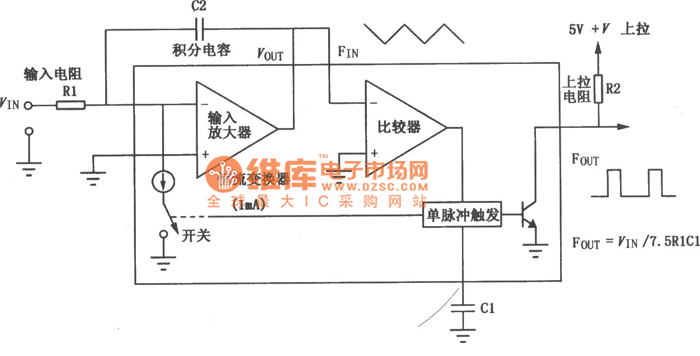
Self Powered Sine Wave to Square Converter

This circuit utilizes a single active component, the 4069 IC, to convert sine waves into square waves without requiring an external power source. It is designed for testing audio instruments.
The circuit leverages the characteristics of the 4069 IC, which is a hex inverter. Each inverter within the IC can be used to transform the input sine wave into a square wave through its inherent switching behavior. The circuit typically employs a sine wave input, which can be sourced from an audio signal generator or similar device.
To implement this conversion, the sine wave is fed into one of the inverter inputs. The inverter operates by outputting a high signal when the input signal exceeds a certain threshold and a low signal when it falls below that threshold. This results in the generation of a square wave that matches the frequency of the input sine wave but with a distinct waveform.
The absence of a power source in this configuration may suggest the use of passive components such as capacitors and resistors to bias the inverter and set the appropriate thresholds. This could be achieved by connecting the inverter in a configuration that allows it to operate from the input signal itself, possibly utilizing a capacitor to couple the input signal and resistors to set the appropriate gain and biasing levels.
In practical applications, this circuit is beneficial for audio testing, enabling quick checks of audio frequencies and waveform integrity. It offers simplicity and efficiency, making it an excellent choice for engineers and technicians working in audio electronics.Only with a single chip active component (4069 IC), this circuit will convert sine to square waves without a power-source. To test some audio instruments, we.. 🔗 External reference
The circuit leverages the characteristics of the 4069 IC, which is a hex inverter. Each inverter within the IC can be used to transform the input sine wave into a square wave through its inherent switching behavior. The circuit typically employs a sine wave input, which can be sourced from an audio signal generator or similar device.
To implement this conversion, the sine wave is fed into one of the inverter inputs. The inverter operates by outputting a high signal when the input signal exceeds a certain threshold and a low signal when it falls below that threshold. This results in the generation of a square wave that matches the frequency of the input sine wave but with a distinct waveform.
The absence of a power source in this configuration may suggest the use of passive components such as capacitors and resistors to bias the inverter and set the appropriate thresholds. This could be achieved by connecting the inverter in a configuration that allows it to operate from the input signal itself, possibly utilizing a capacitor to couple the input signal and resistors to set the appropriate gain and biasing levels.
In practical applications, this circuit is beneficial for audio testing, enabling quick checks of audio frequencies and waveform integrity. It offers simplicity and efficiency, making it an excellent choice for engineers and technicians working in audio electronics.Only with a single chip active component (4069 IC), this circuit will convert sine to square waves without a power-source. To test some audio instruments, we.. 🔗 External reference





